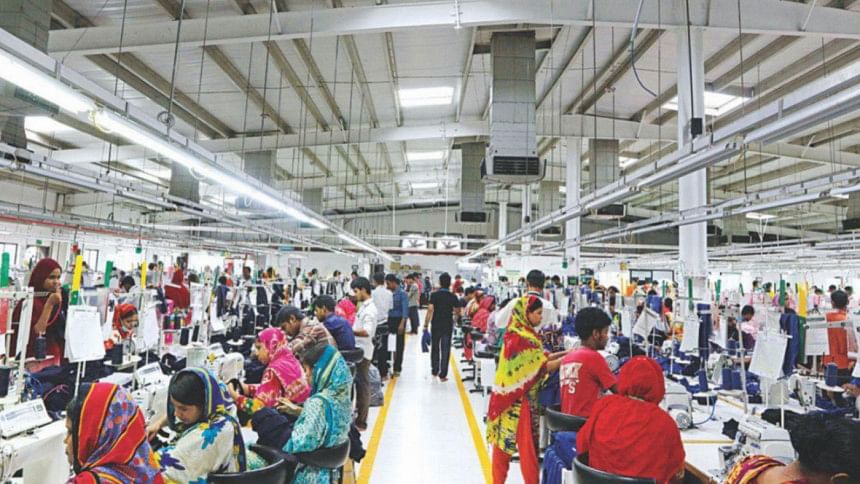Bangladesh on the renewable energy race track

When deciding where to source clothing from, an increasingly important factor will be energy use as fashion brands and retailers look to reduce carbon emissions in supply chains.
A country's energy mix may even one day override all other issues given the climate crisis we face. Here I look at progress made by five garment exporting countries—China, Bangladesh, Vietnam, Pakistan, and Turkey—in their transitions to renewable energy sources.
China
China, the world's largest energy consumer, has made significant strides in renewable energy development. The country's energy mix is still dominated by coal, accounting for more than 50 percent of its energy consumption in 2021.
However, China is the global leader in renewable energy capacity, with extensive investments in solar, wind, and hydropower. As of 2023, China has over 500 GW of solar and wind capacity combined, with ambitious plans to reach 1,200 GW by 2030.
Hydropower also plays a significant role, contributing about 20 percent to the national grid. The nation has committed to achieving carbon neutrality by 2060. Government policies, substantial subsidies, and advances in technology have propelled China's rapid growth in renewables.
Bangladesh
Bangladesh's energy mix is heavily reliant on natural gas, which accounted for about 62 percent of its total energy consumption in FY 2021-2022. Bangladesh has made remarkable progress in solar home systems, with over five million installations serving rural households. Despite this, renewables contribute only around three percent to the national grid as of 2023.
This has to improve if we are to remain internationally competitive. Our customers will demand that it does. To this end, the government has set a target to generate 10 percent of its electricity from renewables by 2030, but achieving this goal requires significant investments and policy support. The energy mix also includes imported oil and coal.
Vietnam
Vietnam, the third largest exporter of clothing after China and Bangladesh, has a diverse energy mix, with coal being the predominant source, accounting for more than 40 percent of the total energy consumption in 2023. Hydropower is also significant as well as natural gas and oil.
Vietnam has seen a dramatic increase in its renewable energy capacity, particularly in solar and wind power, thanks to favourable government policies, including feed-in tariffs and tax incentives. The wind energy sector is also growing, with projects like the 99.2 MW Bac Lieu wind farm. Vietnam aims to have 30 percent of its electricity generated from renewables by 2030.
Pakistan
Pakistan's current energy mix is dominated by fossil fuels, with natural gas, oil, and coal making up the majority as of 2023. The renewable energy sector is still in its early stages, but the country has significant potential, particularly in wind and solar power.
As of 2023, renewable energy accounts for about six percent of Pakistan's total energy mix, with plans to increase this share to 30 percent by 2030. Key projects include the Quaid-e-Azam Solar Park and various wind farms in the Sindh province.
Government initiatives and international support have been crucial in advancing these projects. However, Pakistan faces challenges such as bureaucratic hurdles, financial constraints, and a need for more robust policy frameworks to attract private investment.
Turkey
Turkey's energy mix is quite diverse, with natural gas (27 percent), coal (25 percent), and oil (29 percent) being the primary sources of energy in 2022. Renewables including wind, solar power and hydro also makes significant contributions.
The country has implemented various incentives, including feed-in tariffs and purchase guarantees, to encourage investment in renewable energy.
However, the transition is challenged by economic instability and fluctuating policy environments, which can impact investor confidence.
Overall, the renewable energy transition in China, Bangladesh, Vietnam, Pakistan, and Turkey highlights diverse paths and challenges. China's leadership in capacity and investment sets a global benchmark, while Vietnam's rapid adoption showcases the potential of favourable policies and incentives.
Pakistan's journey emphasises the need for policy and financial frameworks, and Turkey's balanced approach reflects a strategy of building energy security through renewables.
But what about Bangladesh? We must improve the supply of renewable energy available to our industrial base. Our government, regional authorities, garment manufacturers and international fashion brands must collaborate on this issue to better understand the current state of our energy mix, decide how it can be shifted heavily in favour of renewable energy and then work out what this will cost—and, most importantly, how it will be funded.
Bangladesh has a chance to lead on this issue, but China, Pakistan, Turkey, Vietnam and other garment producing countries will also be looking to boost their own renewable energy use.
The race is on.
Mostafiz Uddin is the managing director of Denim Expert Limited. He is also the founder and CEO of Bangladesh Denim Expo and Bangladesh Apparel Exchange (BAE).
Views expressed in this article are the author's own.
Follow The Daily Star Opinion on Facebook for the latest opinions, commentaries and analyses by experts and professionals. To contribute your article or letter to The Daily Star Opinion, see our guidelines for submission.

 For all latest news, follow The Daily Star's Google News channel.
For all latest news, follow The Daily Star's Google News channel. 








Comments